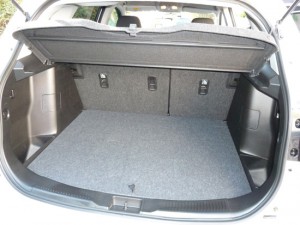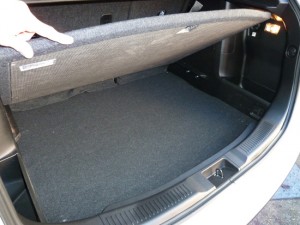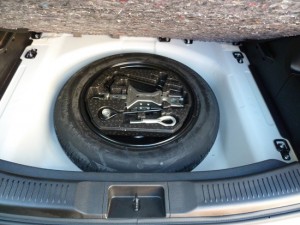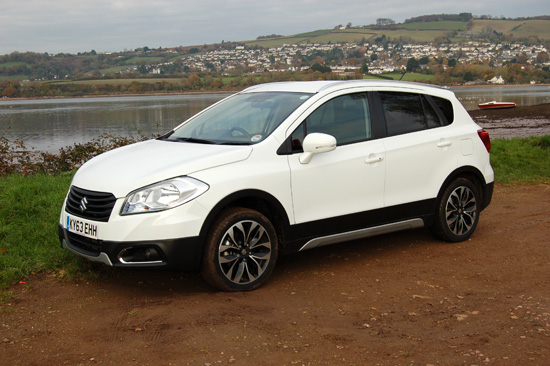 An attractive, practical ‘crossover’ vehicle seeking to provide enjoyable and economical family motoring… Suzuki’s fresh-faced SX4 S-Cross looks very good on paper, but how does it shape up on the road? Kim Henson reports, test driving a range-topping turbo diesel SZ4 version.
An attractive, practical ‘crossover’ vehicle seeking to provide enjoyable and economical family motoring… Suzuki’s fresh-faced SX4 S-Cross looks very good on paper, but how does it shape up on the road? Kim Henson reports, test driving a range-topping turbo diesel SZ4 version.
Today’s ‘crossover’ models (effectively combining the best attributes of saloons, hatchbacks, estate cars and sport utility vehicles) appeal to buyers who require a single vehicle to fulfil a multitude of roles in family life.
Stepping up to this task is Suzuki’s SX4 S-Cross. Produced at the firm’s Magyar factory in Hungary, the model is well-equipped in all its four trim levels, and comes in a total of 13 different versions, competitively priced at between £14,999 and £23,549. Buyers can choose between front wheel drive and four wheel drive (‘ALLGRIP’ versions). The ALLGRIP system incorporates four selectable modes – auto, sport, snow and lock.
In design and construction of this Suzuki, much use has been made of high-tensile steel (for strength and light weight) and this has helped to stiffen the body structure, improving both refinement and handling stability.
Development work has been carried out to improve the vehicle’s aerodynamic properties, in turn aiding on-the-road performance, as well as minimising both fuel consumption and emissions. Components receiving attention in this area include the front grille, bumper corners, fog lamp bezels, wheels, door mirrors, roof and underbody – attention here has been paid to the engine and floor under-covers, front strakes (that is to say, ‘crease lines’), bumper shock absorbers and exhaust system.
In each case the S-Cross provides spacious seating for up to five adults, a large load compartment and a willing engine designed to be frugal on fuel, mated to either a six speed manual gearbox, or a state-of-the-art automatic Continuously Variable Transmission (CVT). This incorporates a seven speed manual programme, which can be selected by the driver and is controllable by ‘paddles’ on the steering wheel.
Both petrol and diesel units have a capacity of 1.6 litres, and both produce 120PS. However, as expected the petrol unit delivers its maximum power at a higher engine speed (6,000 rpm, compared with just 3,750 rpm for the diesel).
The petrol motor has been derived from Suzuki’s proven M16A engine. Notable improvements include reductions in both friction and weight (plus a raft of other minor internal changes) and the lowering of the idle speed, plus a revised fuel cut-off system. These measures help to reduce petrol consumption.
The diesel engine used in the S-Cross employs a variable geometry turbocharger (VGT), designed to give optimum forced induction by controlling the flow of exhaust gases according to engine speed. This helps to achieve high torque output (a highly respectable 320Nm or 236 lb.ft. from just 1,750 rpm), low fuel consumption and minimal particulate emissions. (By comparison, the petrol engine produces its maximum torque of 156Nm or 115 lb.ft. at 4,400 rpm).
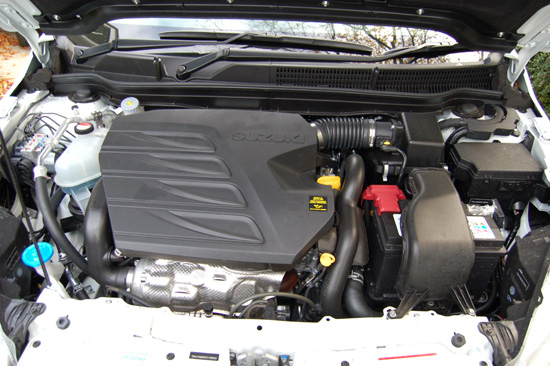
As with the petrol engine, friction reduction measures have been applied to the turbo diesel unit, in addition to which the fuel injection control system and exhaust gas recirculation set-up have been revised, and a more energy-efficient diesel pump has been installed.
In conjunction with the diesel engine, a sound-insulating engine cover is fitted, plus a cowl top panel brace and a sound-insulating windscreen (all helping to minimise noise, vibration and harshness).
Fuel consumption and emissions figures are impressive for all versions. As examples, the ‘Combined’ fuel consumption for the two wheel drive, manual and automatic (CVT) transmission variants fitted with the petrol engine is quoted as 51.3 mpg, while CO2 emissions are 127 g/km for the manual version, 125 g/km for the CVT-equipped model. The ALLGRIP four wheel drive versions come very close to these figures too.
By contrast, the ‘Combined’ mpg figure for two wheel drive S-Cross models with the 1.6 DDiS diesel engine is 67.2, and 64.2 for the ALLGRIP four wheel drive variants. Emissions figures are 110 g/km and 114 g/km respectively.
The S-Cross running gear and suspension have been developed to suit European roads, and to give positive, enjoyable and reassuring car-like handling characteristics. Some of the work in this department has been carried out in the UK.
SAFETY FIRST – AND WELL-EQUIPPED
Importantly, this Suzuki has gained an NCAP ‘five star’ overall safety rating (a wealth of safety features are built-in). Commendable scores were achieved for safety performance in each of the individual categories too – 92 per cent for adult occupant protection, 80 per cent for child occupant protection, and 72 per cent for pedestrian protection (the highest score achieved compared with contemporary competitor crossover models).
The starting model in the S-Cross line-up is the 1.6 litre petrol-powered SZ3, costing £14,999. Among the many standard features on this version are air conditioning, seven airbags, a cruise control with a speed limiter, a CD audio system with a USB connector, daytime running lights and 16 inch aluminium alloy wheels. For those preferring diesel power, the 1.6 litre DDiS variant of the SZ3 costs an additional £2,000 (but over time this extra outlay will be steadily offset by the improved consumption figures of the diesel engine).
The next step up the trim level ladder is the SZ4, again offered in petrol and diesel forms, and featuring (for example) dual zone automatic air conditioning, a keyless entry and start facility, Bluetooth connectivity, front fog lamps, silver finished roof rails and ‘skid’ plates, 17 inch aluminium alloy wheels and privacy glass. (For this road test I sampled the 1.6 litre DDiS – diesel – version of the SZ4).
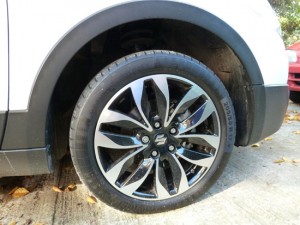
Even higher specification levels are incorporated within the SZ-T, including built-in satellite navigation, a rear parking camera, a DAB radio and polished 17 inch sports wheels.
Topping the tree in terms of features are the SZ5 versions, with additional standard fittings including leather-trimmed seats, automatically-activated headlamps and screenwipers, HD projector headlamps, a double sliding panoramic sun roof and front parking sensors.
ON TEST… WHAT TO EXPECT?
I like the exterior styling of the S-Cross; just very neat and up-to-the minute, with clean lines and without being over-ostentatious.
When first entering the SZ4 version of the SX4 S-Cross that I sampled, I was also impressed by its smart, roomy, welcoming interior.
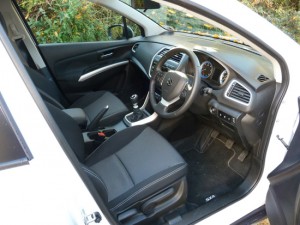
Acquaintance with the vehicle over the week-long test period helped me appreciate further the obvious attention to detail that has been paid by the designers. There are many small but useful features that help make the car a practical and enjoyable proposition.
It is also interesting to note that the test car’s SZ4 trim level is ‘only’ one version up from the ‘entry’ S-Cross model (SZ3), with two higher trim designations above it. To me, that makes its comprehensive equipment especially welcome.
For example… height adjustment is provided for both the driver’s and front passenger’s seats, the steering column is height-adjustable too. All four door windows, as well as the door mirrors, are electrically-operated, also the front doors incorporate bottle holders and useful storage compartments. In addition, above the windscreen are positioned twin map reading lamps, plus a holder for a pair of sunglasses. I also liked the handy foot rest provided for the driver’s left foot, just to the left of the clutch pedal.
‘Places in which to put things’ abound, with a drop-down lidded glovebox ahead of the front passenger seat, and a deep storage box beneath the central arm rest located just behind the handbrake lever.
By the way, personally I was pleased to find a conventional, manually-operated handbrake lever (rather than the electrically-controlled ‘push button’ variety found in some modern vehicles). In common with many other drivers I’ve spoken to, I find this traditional type of handbrake lever easier to use, more positive and safer in operation (in particular, there is no doubt whether the handbrake is on or off!). Okay, I also realise that some people prefer electrically-activated handbrakes…
There are further small storage compartments to the right of the handbrake, and adjacent to the dash-mounted 12 volt socket.
To me all the switchgear seems sensibly positioned, and the steering wheel houses a multitude of easily-reached controls for the sound system, a phone and the standard-fit cruise control – which is very intuitive in operation.
To the right of the steering wheel, the facia accommodates the engine start/stop button, the rear fog lamp switch and headlamp beam height adjuster control, plus a switch to turn the standard-fit traction control system on or off.
I found the instrumentation especially clear, both in the daytime and at night, and the ‘information’ screen, positioned centrally between the speedometer (highlighted in 20 mph increments) and the tachometer was very easy to assimilate.
A dash-mounted indicator displays what the car’s management system feels are the optimum ‘change up’ and ‘change down’ points for each gear (for best fuel consumption and emissions performance), but the driver can over-ride these according to situation and personal preference.
SPACIOUS AND COMFORTABLE TOO
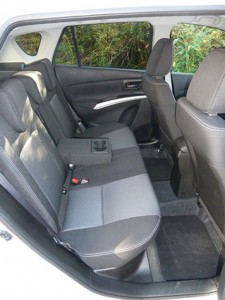
This Suzuki provides excellent head and leg room for front seat occupants, and also for those in the rear.
The seats proved to be accommodating and comfortable over very long distances, and there are head restraints for each of the three rear seat passengers, as well as those in the front. The rear seat incorporates a centrally-positioned folding arm rest, with twin cup holders built-in.
The wide-opening front and rear doors aid entry to and exit from the vehicle, and each rear door features a bottle holder (but no other storage space).
Luggage accommodation is excellent, and the split folding facility for the rear seat back (1/3:2/3) enables a variety of people/luggage carrying options to be brought into play, according to need. The seats incorporate two built-in ‘top tether’ points, for a child seat.
The seat backs can be set at one of two angles; the more ‘vertical’ setting provides additional space within the luggage compartment.
On each side of the large, sensibly-shaped boot (which is flat-floored, and the tailgate opens from bumper level) there is a useful ‘bin’ for storage. In addition, there is an another large, shallow storage compartment beneath the boot’s ‘false’ floor. Further down still, the ‘space saver’ type spare wheel, plus the wheel-changing tools and a towing ‘eye’, are housed in their own separate compartment beneath the boot floor.
ON THE ROAD
The test car was powered by the 1.6 litre DDiS direct injection turbo diesel engine, driving the front wheels through a six speed manual gearbox (in which, incidentally, 4th, 5th and 6th gears are all ‘overdrive’ ratios).
This willing motor develops 120PS, enabling 62 mph to be attained, from rest, in just 12 seconds, and on to a top speed of 111 mph where legal.
The diesel power unit in this S-Cross is a refined, quiet and smooth-running motor, and its strong delivery of torque at low engine speeds helps make driving more enjoyable, with minimal gearchanging required in hilly districts or in town use, for example. That’s not to imply that gearchanging is a chore; the six speed manual gearbox has a smooth, positive and precise gearchange action.
This S-Cross provides a sporting drive when required, and is also equally happy to cruise over long distances at hushed, fuel-sipping low engine speeds; at 60 mph in 6th (top) gear, the engine is running at just 1,800 rpm.
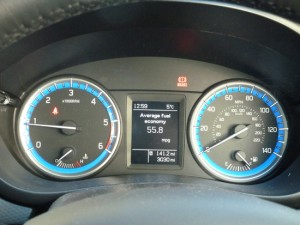
What about fuel consumption? The official ‘Combined’ figure is 67.2 miles per gallon, and while, during my time with the car, I didn’t quite achieve that, I wasn’t far short of it. I feel that in real-world ‘mixed’ motoring, most owners should see figures on the right side of 60 mpg, and even in town use better than 50 mpg is a realistic expectation (official ‘Urban’ figure, 55.3 mpg). All very welcome, and commendable.
Due to the low CO2 emissions of just 110g/km, this S-Cross falls into road tax Band ‘B’, meaning an annual rate of just £20.
At all times during my time with the car the suspension provided a supple ride, even on rough surfaces, yet the S-Cross always felt agile and predictable when cornering.
I liked the way that this Suzuki handled and the reassuringly ‘safe’ feel it provided in all situations; I felt that the brakes were excellent too – with ventilated front discs, plus solid discs at the rear.
VERDICT
The SX4 S-Cross 1.6 DDiS is a competent, spacious and versatile vehicle, ideal for family use. However, equally it is also fun to drive, as well as being frugal on fuel.
In SZ4 form, priced at £18,249 before any options are added, it represents good value for money too, especially bearing in mind its comprehensive standard equipment.
Devon Delights… While road-testing this S-Cross, the car was used for a memorable tour in south Devon. To see where the Suzuki took us, and how well the vehicle performed, please see our ‘Motoring for Fun’ feature on this ‘adventure’ by clicking HERE.
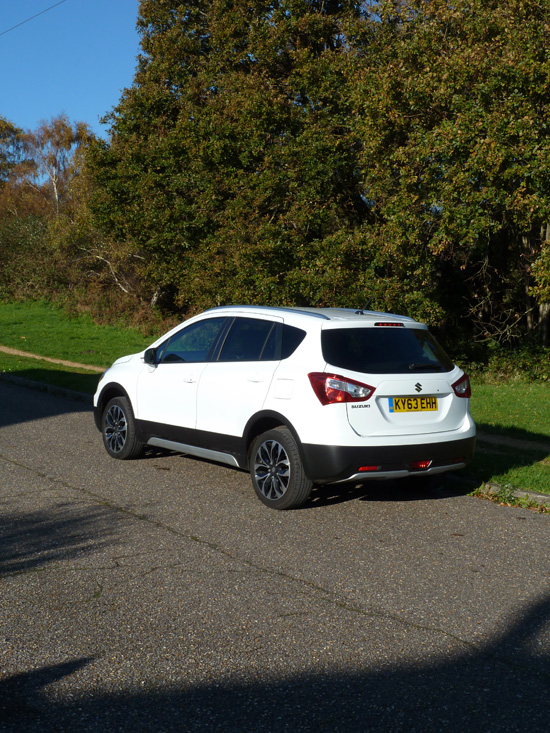
WHEELS-ALIVE TECH. SPEC. IN BRIEF
Suzuki SX4 S-Cross 1.6 litre DDiS SZ4
Drivetrain: Front engine, front wheel drive
Engine: 1598cc overhead camshaft, 16 valve four cylinder direct injection turbo diesel, with Variable Geometry Turbocharger (VGT); Euro 5 compliant
Power: 120 PS @ 3,750 rpm
Torque: 320Nm (236 lb.ft.) @ 1,750 rpm
0–62 mph: 12 seconds
Top speed: 111 mph
Fuel consumption, ‘official’ figures:
‘Urban’: 55.3 mpg
‘Extra urban’: 76.3 mpg
‘Combined’: 67.2 mpg
CO2 emissions: 110 g/km (road tax Band B; £20 per year).
PRICE (‘On The Road’): 1.6 litre DDiS SZ4 £18,249
Extra-cost option on test vehicle: Special polished 17 inch aluminium alloy wheels, £733.20
Total price of car as tested, £18,982.20
Warranty: Three years/60,000 miles; one year AA/Suzuki Assistance; 12 year ‘perforation’ warranty.
The Wheels-Alive team took this Suzuki to south Devon during the course of the road test, click here to read a report of this motoring ‘adventure’, in our ‘Motoring for Fun’ series of features.
